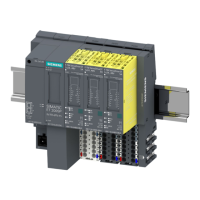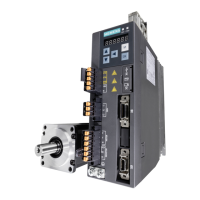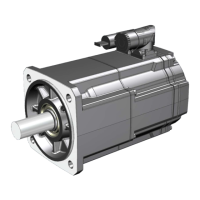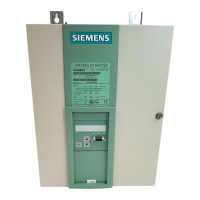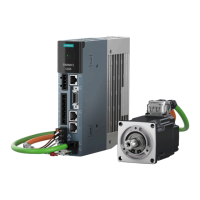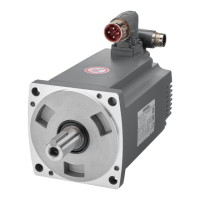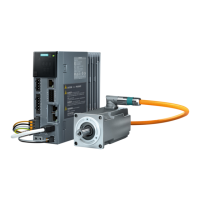4 Signal description 02.05
© Siemens AG 1998 All Rights Reserved
4-2 FM-STEPDRIVE/SIMOSTEP (FB)
The signals and timing diagrams for the pulse and signal interfaces are
described in the following sections.
4.1 Pulse interface
The pulse interface has four 5 V optocoupler inputs and one optocoupler
output.
Note
The technical data of the pulse interface are described in chapter 3.
The signal timing of the inputs/outputs is described in chapter 4.3.
Inputs:
PULSE (clock)
To start motor shaft rotation, rectangular clock pulses must be supplied to
the PULSE input. Each positive pulse edge triggers one motor step if the
power controller is in ready status and the GATE_N input is energized
(24 V).
The sense of rotation is preset with the direction input (DIR).
DIR (sense of rotation)
When the DIR signal input is deenergized, the motor turns in a clockwise
direction (as seen from front towards motor shaft). When this signal input
is energized, the motor turns in a counterclockwise direction (as seen
from front towards motor shaft). The sense of rotation can also be
inverted by interchanging two motor phase leads.
ENABLE (enable)
When the ENABLE input is energized, the power controller is enabled.
After approx. 500 ms, the power controller reports readiness via the
READY1_N and READY2 outputs and the motor is energized. If 24 V are
present at the GATE_N input of the signal interface, clock pulses can be
supplied to the PULSE input.
PWM (current control)
The set motor phase current can be modified using a pulse width
modulation signal on the PWM input in the range from 0% to 100%
(frequency range 10 kHz to 20 kHz). The phase current is determined by
the pulse/pause ratio of the PWM signal. If the signal input is
deenergized, the set phase current flows. If the signal input is energized,
the motor phase current is switched off. When the motor is stopped, it
does not have any holding torque.
Output:
READY1_N (readiness)
When the ENABLE input is activated, the power controller reports readiness
via the READY1_N output. When the power controller is ready, the
READY1_N output has low resistance. If 24 V are present at the GATE_N
input of the signal interface, clock pulses can be supplied to the PULSE
input.
In case of a power controller fault, or if a power controller enable signal
has not been received via the ENABLE input, the READY1_N output has
high resistance.
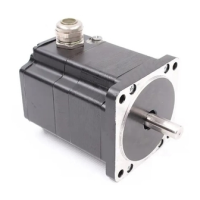
